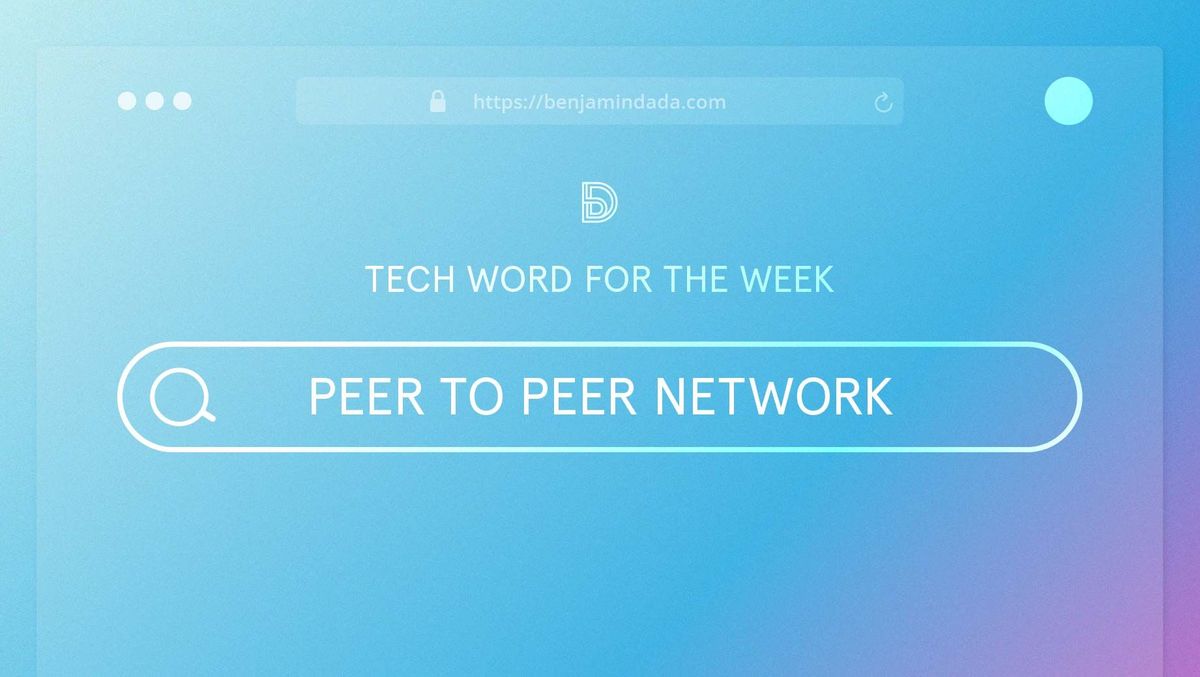Tech Word For The Week: Peer to Peer Network
A peer to peer network is a distributed network where each system on the network both stores and transfers data without a central server.

Tech Word for The Week is a weekly series where we look to explain commonly used words in the tech ecosystem in a simple, engaging way.
If you’ve been using the internet for some time, you must have heard the word “peer to peer” or P2P. It might be a peer to peer payment service, or you saw it on social media, or probably when you sent a message to a friend using an instant messaging app.
One way or the other you might have heard the term. A large percentage of people have not been able to fully grasp the meaning of the word. Other people seem to confuse them with client-server networks. But if you are keen to know more, read on.
Before PSP became a thing, most websites were built on a client-server model. On a client-server network, various computers (clients) are connected to a central system who acts as the server. Here, the client makes a service request and the central system fulfills the request. Every activity on the network was controlled and regulated by the central system.
A peer-to-peer network is a technology born and based on a simple principle: decentralization.
A peer to peer network is a distributed network where each system both stores and transfers data without a central server. P2P eliminates all third-party intermediaries and enables computers on the network to directly interact. A peer-to-peer network is a technology born and based on a simple principle: decentralization.
Each system on the network (also known as a peer or node) acts as both client and server. They have equal capacities. The P2P network model allows no central point of storage because there’s no controlling server. Each participant gets identical copies of the network’s information.
The peer to peer network model is a huge improvement on traditional centralised models. Having no central point of storage makes the data on the network far less likely to be hacked, lost or exploited. All of the systems on the network would have to be hacked to do this.
Some services using peer to peer networks include Skype, Bitcoin (and other cryptocurrencies), Ubuntu, Majaro, Linux Mint, Bit-torrent, etc.
Advantages of Peer To Peer Network
- The network is easy to maintain because each peer on the network is independent of one another.
- The running cost of having a central server is totally removed.
- Adding/deleting/repairing any of the nodes is easy.
- There is less network traffic on a peer-to-peer than a client/server network.
- It’s difficult to take the network down. If one node gets compromised, it won’t affect the operations of other nodes on the network. All of the nodes have to be taken down, to take the network down.
- P2P networks are easy to grow. Adding new nodes does not require a configuration on a central system.
- File sharing is easier, the larger the peer-to-peer network. When a node wants a file, they are downloaded from multiple locations at the same time.
Using a peer-to-peer network also comes with some disadvantages. Some of them include:
- It’s difficult to secure the complete network because each node is independent.
- Users might find it difficult to locate files.
- There’s no security apart from permissions.
- Peer to peer networks can be used for piracy or other illegal activities.
Areas P2P network can be used include:
- File sharing
- Instant messaging
- High Performance Computing
- Peer casting for multicasting streams where to use on demand content delivery.
- Streaming media
- Search and communication network
- Voice Communication






